
Posts Tagged ‘pandemia’
New variant and the war in Europe
A new variant called BQ.1 circulates in the country, according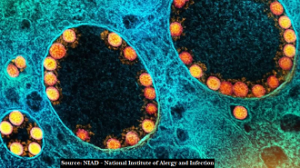 to infectious disease specialist Alberto Chebabo, president of the Brazilian Society of Intectology, it is a variant of the omicron, and is “the same strain that circulates today in Europe and caused an increase in infections in countries like Germany and France”.
to infectious disease specialist Alberto Chebabo, president of the Brazilian Society of Intectology, it is a variant of the omicron, and is “the same strain that circulates today in Europe and caused an increase in infections in countries like Germany and France”.
There are no changes in terms of symptoms, which continue to have, for most patients, the same symptoms as the previous ones: headache, cough, fever, sore throat, tiredness, loss of smell and taste.
A variant had already been found in Amazonas on October 20, according to the Fiocruz unit in the state, which reinforces that it is already circulating in the country.
The war in Europe continues, Russia has completed the enlistment of 300,000 soldiers for the war, keeps the city of Kherson in its domain with the withdrawal of inhabitants and knows that the winter will work in its favor.
The climate in Europe is getting colder, even though it is autumn, December is already very cold and the eve of Christmas officially begins winter, heating depends on gas and mainly Ukraine already faces energy problem due to war.
The United States is starting to pressure Ukraine to return to the table for a peace agreement, it will actually represent a truce, but it will allow for a less gloomy winter for Europe and for the economy that is already in crisis.
Who could act as a mediator is also a problem, at this point the pope is not a good answer, since it will take force to maintain some kind of agreement, Turkey that had been ready or the UN itself may be more suitable for the serious moment of conflict.
Ihis year is difficult speak Merry Christmas and Happy New Year.
End of the pandemic in sight
This was the statement of WHO´s Director General Tedros Adhanom on September 14, last Wednesday, but then he asked that the pandemic continue to be monitored.
on September 14, last Wednesday, but then he asked that the pandemic continue to be monitored.
Consultant Sylvia Lemos from the Brazilian Society of Infectious Diseases also told CNN: “It is something that encourages the prospect that something may be ending the end of the pandemic, but it does not mean that the world is free of surprises”, and she also asks for caution. stating that “more sustainable data is still needed”.
The protocols are that in general the use of masks is optional, but hygiene and ventilation care are not expendable, also environments where the use of mask is imperative, as there are still sanitary environments such as hospitals and places of greater danger. .
According to the infectologist, in addition to the fact that every viral infection is cyclic, the last strain must also have lost strength and not have new stronger variants, and it is obvious that vaccination helped.
The country has the lowest rates since 2020, and the downward trend in deaths and cases remains.
It is necessary to understand how the infectious disease specialist reminds us that the action of the virus “does not end” and that science will dictate the new measures to be taken from now on, such as whether there will be annual vaccinations and the prevention of risk groups.
Unless new facts occur, our weekly monitoring of the pandemic will be more sporadic.
The resilient pandemic and the possible future
The Covid 19 pandemic continues in declines followed by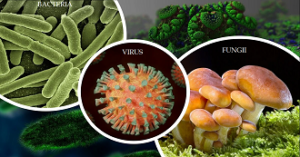 stability, as in Brazil in the last week, around 120 deaths and 10,000 known cases of virus infection.
stability, as in Brazil in the last week, around 120 deaths and 10,000 known cases of virus infection.
Last week we highlighted the alert of several scientists that the next pandemic could be that of fungi, one of the biggest reports on this subject, which collects data, cases and several researchers in many countries, was published on August 6 by National Geographic.
It begins with a case of a 48-year-old smoker who went to Johns Hopkins Medicine hospital in Maryland (USA) where infectious disease specialist Shmauel Shoham, while investigating a possibility of cancer, detected a common Aspergillus fungus in the infection.
Then he cites India, where at a certain moment of Covid 19 a large number of invasive and quite deadly fungal infections, with a black mold caused a violent wave of deaths, which was reported worldwide, there is also the case of Candida auris, infection virulent fungus that transmits through the blood and came out of nowhere, as are fungi that depend on other organisms and infections for food.
According to the magazine of the five million species of existing fungi, only 120 thousand are known and studied, and of these only a few hundred can harm human beings.
With fungicides used in extensive agriculture, mortality rates from invasive fungal infections are estimated to grow by up to 50%, which translates, according to the magazine, to up to 1.6 million deaths and $7.2 million of medical costs per year, and given the challenge of accurate diagnoses is certainly an underestimated number.
Experts caution is the ability of fungi to evolve into microbes with increasing selective pressures that force them to adapt and a growing population of susceptible humans.
The fungi primarily attack agricultural production, but the liberal use of the medicinal equivalent for humans also poses unintended threats, warn experts in the report.
The report ends by stating that the threat of fungal pathogens has historically been underestimated and calls for greater study and preventive control in the area.
Reference:
Humans are not prepared for a pandemic caused by fungal infections (nationalgeographic.com)
Covid-19 and future care
Covid 19 leaves some lessons, one of them is not to underestimate viruses, they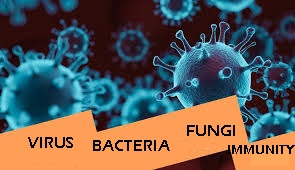 can have a greater mutation capacity than expected and can complicate immunity results, in the field of social policy, governments and administrative bodies need to respect life and sometimes you have to sacrifice efficiency and performance for the greater good.
can have a greater mutation capacity than expected and can complicate immunity results, in the field of social policy, governments and administrative bodies need to respect life and sometimes you have to sacrifice efficiency and performance for the greater good.
Aspects of social life, there is still a lot to learn and even the results in a near end of covid, are still to be evaluated: anxieties, depressions and irritations are aspects that should not be underestimated and also need to be seen as public health.
In the field of viruses, there is now a debate about an immunity deficit” caused by the period of social isolation, in all age groups, but especially in children, this has favored diseases such as hepatitis and other viruses more intensely.
Last week we said studies that indicate a possibility of pandemic “evolution” for bacteria and fungi, I looked for some reports and studies about it and found that there is indeed a possibility.
According to a French study, in which one of the co-authors is a French doctor François Angouvalnt, the fact that some people did not catch so many viruses in the months of the pandemic was a relief on average from the tragedies of Covid-19 peaks, but it left the immune systems without training to face common pathologies and created population groups more vulnerable to some viruses and bacteria that are normally treated and resolved as simple cases.
The study followed some evolutions of these diseases since 2020 and observed the evolution in the population of Paris and caused apprehension a greater vulnerability.
Particularly in Brazil, the number of deaths from covid is around 70 daily deaths and falling, while the number of infections below 10 thousand, everything indicates an end of the pandemic by the end of the year, but with a new wave of cold in the country. south and southeast care must be maintained.
Falling pandemic, there could be another
The pandemic continues to fall, slowly due to both the vaccination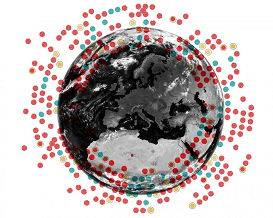 rate and the relaxation of protocol measures, in Brazil 144 deaths and 15 thousand infections were recorded, it is the lowest rate since May.
rate and the relaxation of protocol measures, in Brazil 144 deaths and 15 thousand infections were recorded, it is the lowest rate since May.
The question is whether new pandemics can arise and what precautions to take for prevention, which is much better than letting it happen and then sounding the alarm.
In China some serious viruses are monitored, in general they come from animals to humans, that of the shrew, a small rodent is one of them, a study released on August 4th detected the Langya henipavirus (LayV) that caused infections in 35 people, among 2018 and 2021 in Shandong and Henan provinces causes symptoms such as fever, fatigue, anorexia, myalgia and nausea.
However, the forecast in the medium and long term is that there will be an “evolutionary” process for fungi and bacteria, this is because pesticides and medicines for bacteria cause an evolution in organisms, and in the case of fungi there are not many studies and the use of defensive is increasingly intensive.
In the United States, a rare bacterium called Burlkolderia pseudomallei has been found, which can make some people extremely sick, especially patients with diabetes and kidney problems, doctors are on alert, but there are still no reported cases.
The fungus alert was made by a report by National Geographic, which says that we know little about these organisms and they are very resistant to treatments and with this, in the event of a pandemic, it could get out of control.
Studies for prevention must also have funding, they are the basis for avoiding pandemics along with the immediate disclosure of cases that can be chronic.
Residual Covid and absence of protocols
Covid remains low but stable with a moving average of deaths above 200, and registering in the last few days close to 300 daily deaths, the number of cases is slowly decreasing, around the 30 thousand known cases daily.
above 200, and registering in the last few days close to 300 daily deaths, the number of cases is slowly decreasing, around the 30 thousand known cases daily.
The protocols continue to treat it as a common disease, with very little care, in some environments, with most environments, even poorly ventilated, poorly supervised.
Reports and protocols are published only as a bureaucratic duty, in practice they are rarely observed, it is at the personal discretion or of some zealous sanitary or administrative official.
The World Average of cases was last week at 899,983 out of 770,230, showing that also worldwide there is a certain “stability”, but considering the low numbers is ignoring the possibility of new cases and variants appearing.
The number of cases and deaths worldwide, can be observed as a weaker fifth wave and with a tendency to fall, but looking at the moving average numbers of deaths around 200 thousand is worrying and should still be under strong protocol care.
The WHO emergency committee for the Pandemic has been issuing notes since the beginning of July maintaining the state of Public Health Emergency of Internal Interest, noting the growth of infection rates in some countries and warning for the maintenance of vaccination. .
In a July note, the Committee expressed: “concern about sharp reductions in testing, resulting in reduced surveillance coverage and quality, in addition to fewer genomic sequences being submitted to open access platforms. This impedes assessments of current and emerging variants of the virus and is translating into less ability to interpret trends in transmission and to adjust public health measures.”
Local governments however do not seem to be alert to the level that the WHO asks.
Covid 19: Origins and possible future
A recent study, published by the journal Science, with researchers from 18 countries, reveals that the origin of the Covid 19 virus was even in the Wuhan meat market that sells game meat and types unsuitable for human consumption: such as foxes, bats and dogs.
from 18 countries, reveals that the origin of the Covid 19 virus was even in the Wuhan meat market that sells game meat and types unsuitable for human consumption: such as foxes, bats and dogs.
The studies had been published online as prepints (provisional publications on sharing sites) in February and have now had workshop publication in the journal Science (science.org).
One of the researchers publishing the study, Kristian Andersen, clarified to the Associated Press news agency that they have not refuted the lab leak theory, but “I think what’s important here is that there are possible and plausible scenarios and it’s really important to understand that there’s no means equally likely” depending on the mapping of the initial cases of the virus.
Last week, WHO Director-General Tedros Adhanom reiterated that the pandemic “is far from over”, but stressed that the current situation is “very different from a year ago” with important lessons such as vaccinating the right groups and that this assessment “this is not theoretical, this is real” pointing to several countries where the number of hospitalizations is increasing.
The current data from Covid shows that it is still far from the end, in Brazil it has a moving average of cases below 40 thousand and the number of deaths still above 200, with a slight increase of 10% compared to the previous week.
In China, the inhabitants of Shanghai who are under a long and hard stage of Lockdown are already irritated and are tired of the limitations imposed by the authorities, in Wuhan, place of origin, new 4 cases triggered a new lockdown and China follows the zero cases policy. criticized.
In the West, the policy is confusing and varies from country to country, it can be said that there is no standard protocol and when there is, it is rarely observed by the population and supervised, the testing mechanism is particular and inefficient.
Covid in decline and WHO shifts focus
With the number of deaths above 200 in Brazil, Covid is still a concern, since the number of cases has dropped below 50 thousand ‘which shows a downward trend, but care protocols and care with protocols are still necessary. .
concern, since the number of cases has dropped below 50 thousand ‘which shows a downward trend, but care protocols and care with protocols are still necessary. .
The World Health Organization (WHO) in a document released this Friday (22/07) announced that a new global strategy to increase vaccine coverage against Covid-19, especially among the most vulnerable populations with comorbidities and advanced age, where aims to reach 100% vaccinated.
The strategy is correct because as the virus circulates, new variants may appear, and as it is very difficult to reach 100% of the population or to lockdown, it is an effective strategy.
Monkey smallpox represents a new concern, the number of cases is growing worldwide, and in Brazil there are already more than 600 cases, now with internal transmission, but the number of cases is increasing worldwide.
Transmission can occur either through close contact with injuries or through bodily fluids, respiratory droplets and contaminated materials such as personal clothes and bedding, and according to health agencies, , between human beings in physical contact between close people who are symptomatic.
Precautions therefore must be to avoid contact with contaminated materials and close people who show symptoms.
Covid 19: increase and new variant
We have only posted the number of infections that experience a significant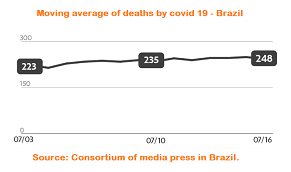 increase, but a recent report by CNN warns that the number of deaths has increased by 67% in the last month and the data is worrying, the new variant BA.5 seems to be linked to the fact.
increase, but a recent report by CNN warns that the number of deaths has increased by 67% in the last month and the data is worrying, the new variant BA.5 seems to be linked to the fact.
According to CNN itself, Japan experiences a record of more than 110,000 cases, which made Prime Minister Fumio Kishida say on Thursday (14/07) that the wave is spreading quickly and asked for special care on holidays and weekends.
In Brazil it is no different, we posted the number of deaths (see the graph above) just to alert the seriousness, since the current wave has not represented a great concern in the eyes of the authorities, although experts are already starting an alert because of the new variant.
Experts detected the BA.4 and BA.5 variants in South Africa and then started monitoring it in the UK, the US and now it spreads across Europe.
The most worrying thing is that it even affects people who have had Covid recently,
These subvariants that emerged from the “original” omicron were added to the World Health Organization (WHO) watch list in March of this year and also ended up designated as variants of concern in Europe.
The important thing is to point out that as the virus spreads (that is, it continues to circulate) it allows new mutations, so even immune and asymptomatic people should have the same care as others.
An awareness campaign is needed, and there are few campaigns in this direction.
Covid increases, care decreases
Although cases are less severe, both the moving average of cases and the number of deaths increase, care decreases although recommendations exist, it is less and less observed.
cases and the number of deaths increase, care decreases although recommendations exist, it is less and less observed.
At 14 days up, the moving average reached 59,717, while the moving average of the number of optimums reaches 206, and a worrying number is that which speaks of at least two deaths of children under 5 years of age per day.
The numbers are given by the survey of the consortium of press vehicles in Brazil and these data are consolidated at 20:00, the numbers presented are up to 02/07.
There are no clear protocols, the Secretary of Education of the State of São Paulo, for example, while excluding any possibility of suspending the class, still emphasizes in its last recommendation that “they consider the need to promote the continuity of face-to-face classes, in order to safeguard learning. , mental health, nutrition and protection of children and adolescents in a safe school environment”, seems contradictory when talking about “protection”.
The need to socialize children and maintain schooling is indisputable, but it is necessary to guide and maintain care with safe protocols and ventilated and sanitized environments.
The recommendations clarify that the vaccination rate guarantees protection, but the high indicates that some additional measure should already be taken, and there is no observation in this regard.
The use of masks and alcohol gel is optionally used by the population in various environments and gives the impression that the pandemic would already be in the final stage, but the numbers in May and June have increased.

